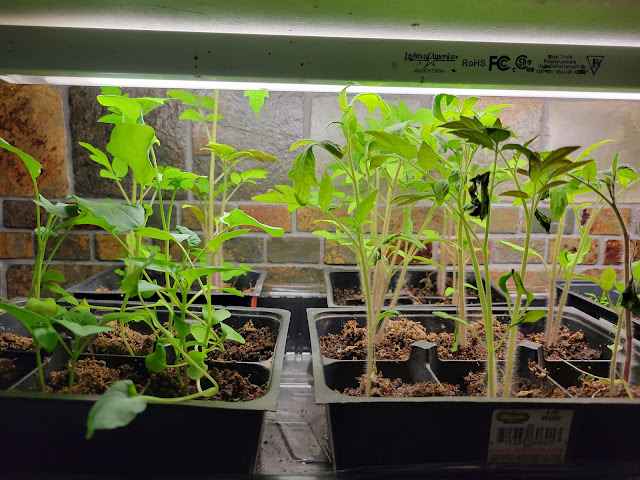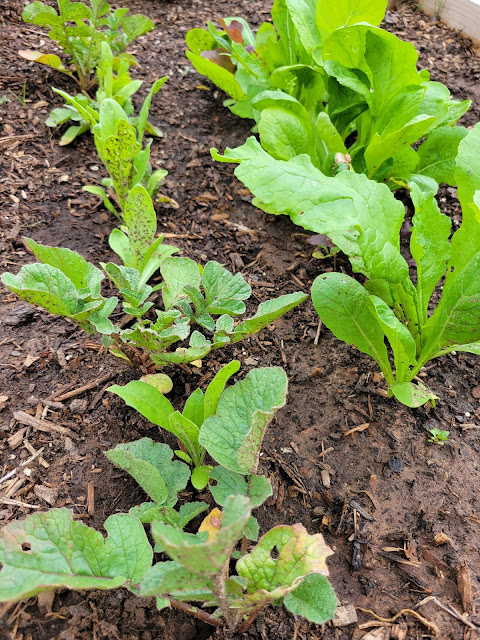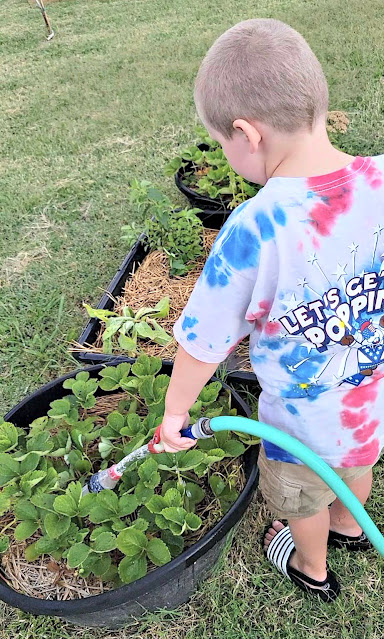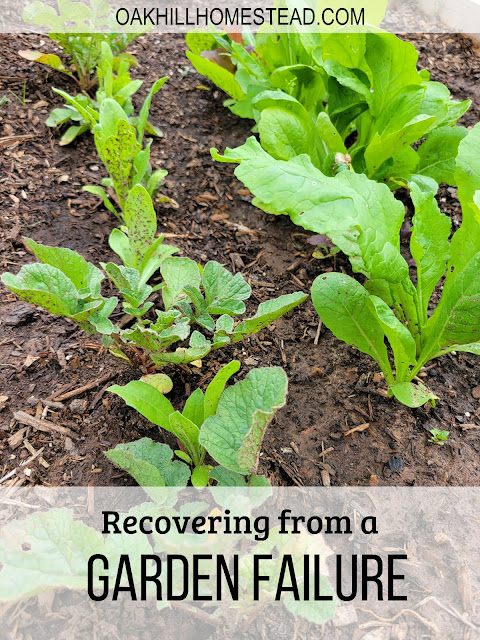How do you deal with a disappointing garden, or worse yet, a garden failure?
I'm sharing my own tales of a challenging garden season - a tale of the unpredictability of nature. But this story is not about dwelling on garden setbacks; it's a celebration of resilience and a guide to turning garden disappointments into opportunities.
If you've tried gardening in the past but you were far from successful, I'm here to encourage you to try again. Find expert tips in this post to help you recover from a challenging gardening season.
Subscribe: Apple Podcasts | Spotify | Google Podcasts | YouTube
How to recover from a garden failure
Often a disappointing garden season is caused by the weather, whether it's too hot or too cold, or you had too much rain or not enough.
Garden pests and bugs can also cause a disappointing garden year.
But sometimes, the cause is just beyond your control. That's what happened to me last year.
In spite of it all though, the weather, circumstances, life, overwhelm - whatever the cause of your disappointing garden - there are probably some small victories as well.
Any garden season is a learning experience, too. You figure out what the problem is, do some research, try some remedies, write it all down, and learn from it. Even if your remedies didn't fix things. Even if the problem was totally beyond your control.
I encourage you to learn from it and try again.
This post may contain affiliate links, which means if you click on a link and make a purchase I might earn a small commission, but it doesn't affect the price you pay. Read my disclosure here for more info.
The cause of my own disappointing garden season
My bad year wasn’t due to the weather - well, not in the usual way you'd think.
I was sure this would be a great year. My garden beds weren't brand new this spring, and I'd done a lot of soil amending, composting, and so on.
I had my garden all mapped out on paper, what I’d plant when and where, and what I’d plant after those crops were done and had been harvested.
I was ready!
So I planted my seeds indoors, according to my plan. Maybe I planted a little early, but I was anxious to get started and was really looking forward to spring.
My seedings sprang to life, and I carefully moved them into larger "pots" (bio-degradable cups) and labeled them by variety.
When the spring afternoons were warm enough, I set the seedlings outside in their little plastic cups during the day to “harden off” so they’d get used to being outside in the sun and the wind.
I brought them back in at night when the temperatures dropped.
Most of the plants that I started indoors from seeds were warm weather plants. They like hot weather and won’t survive a frost, so I don’t plant them outside until mid-May or so.
Tomato plants, for instance, and peppers and basil. I did go a little overboard on the tomato seeds this year, but I always share the extra plants with neighbors and friends, so I don't feel so guilty about planting so many seeds.
Tornado season arrived
We got hit by a tornado in April. (See, it was the weather’s fault - even though it was an unusual reason.)
Our roof took a hit and had to be replaced. My little backyard greenhouse was blown away, as well as all of my gardening supplies that were stored inside.
Our grandson’s playhouse was smashed. Our backyard shed blew over upside down.
And two of my raised garden beds just blew away too! Gone without a trace.
Of course, we weren't the only house that was hit, and many of our neighbors had more damage than we did. We were all in shock for a while. I admit it blew the stuffing out of us.
But you know what else blew away? All of my seedlings!
They were outside when the tornado hit, on the porch of our grandson’s playhouse, where the dappled sun could reach them but they were semi-protected from the constant Oklahoma wind.
Mid-April is the beginning of our gardening season, but let's face it, gardening was pretty low on my priority list at that point.
.
Cleaning up after the tornado
As we cleaned up after the tornado, my daughter-in-law and I found some of my seedlings - without their pots - under various piles of debris. I repotted them and babied them and most of them survived.
I'd started 9 different kinds of cherry tomato seeds, and without their plastic pots I had no idea what kind each one was!
It was a mystery until they actually produced some ripe tomatoes and I could tell from the color and shape what kind they were: Snow White, Black Cherry, Sun Sugar which is orange, and some pear shaped red cherry tomatoes that I’m still not sure what kind they were, but they were pretty tasty.
I’d lost a lot of my garden space too, with the loss of those two raised beds, so my mapped-out garden plan was completely useless after all that work.
Replanting
I planted a few other things from seed, but I really didn’t plant much this year.
The rescued seedlings were transplanted when it was warm enough, and I bought a single cucumber plant at the feed store because my grandson loves cucumbers.
I’d been planning to grow sweet potatoes in one of the beds that had blown away. It was really deep and perfect for these plants that grow their tubers underground.
So, instead I gathered four Rubbermaid bins whose lids were missing. My husband, the Chief, drilled holes in the bottom for me and I planted the sweet potato starts in them - starts that I’d grown in the kitchen windowsill.
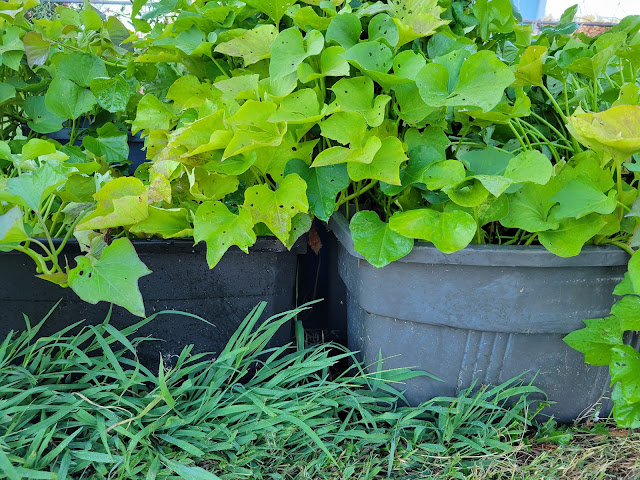 |
| Sweet potato vines growing in plastic totes. These deep-rooted plants are well-suited for growing in deep containers. |
I’d show that tornado that it couldn’t completely beat me!
Volunteer plants
Then, as summer went on, I realized that there were volunteer plants growing in the raised garden beds that were left. A “volunteer” is a plant that grows from seeds that you didn’t plant.
These were from tomatoes that I’d grown last year, that had fallen from the vines and rotted in secret, leaving their seeds to sprout in the spring when the weather was warm enough.
There were volunteer cantaloupe vines growing too. Last year I had tried growing cantaloupe but all of my melons split in half and ants ate them; we didn’t get to eat a single one of them.
But there were cantaloupe seeds left behind that sprouted and grew this summer. And we DID get to eat some of them this time.
And the strawberries and garlic that were planted last year grew and produced food for us. The onions that I’d planted in late winter, months before the tornado hit, grew and thrived.
And we had the volunteer cherry tomatoes and cantaloupes, and cucumbers from that one store-bought plant that turned into a jungle.
Not huge numbers of anything, but we did grow some food after all. In spite of the tornado. In spite of the super-hot summer and the lack of rain. The Lord provided food.
Plus some general overwhelm
But really, on the whole, my garden enthusiasm was pretty low this year. Life definitely got in the way.
The fence repairs, having the roof on our house replaced, and the Chief’s back surgery took all my attention and energy.
I tended and watered the volunteer plants and the seedlings that grew reasonably well for all they’d been through, but most of the tomato plants were hit with blight and died off in mid-summer.
It’s just been a discouraging year, though there are glimmers of hope in the middle of it all.
Next year will be better
I’ll plant again next year. I’ll plan my garden over the winter, when seed catalogs arrive in the mailbox and I’m just aching for spring to return.
I’ll be praying that we won’t be in the path of a tornado again, but I will have a garden.
Like most gardeners, I always believe that next year will be better.
A gardener's most important tools
I believe that a gardener’s most important tools aren’t shovels and pruning shears, but patience, resilience and hope.
Even if you’re not hit by a tornado!
Hope is what keeps us going. Without hope, why would we plant even a single seed?
Let's face it, we believe that those seeds will grow - that's hope in action.
Patience as you wait for seeds to sprout and for flowers to appear and for tomatoes to turn red. Impatience won’t hurry anything along! We're not in charge.
Worrying about tomorrow won’t change anything, and today has enough trouble of its own without worrying about tomorrow too. So slow down and enjoy the journey.
A garden is the best place to rest from the over-busy and overwhelming life we are living. Patience is good for us.
Overcoming trials and disappointments takes resilience, whether it’s a garden that’s washed out by rain, heat, drought, or a grasshopper invasion, resilience is the ability to get back up and try again. You put your boots back on and you bounce back.
Lean on resilience - you can overcome, no matter what happens in your garden - or in your life. Take one day at a time. Just get through this next hour. Things will get better.
The reward of gardening
Because even though fresh produce is a reward for gardening, it isn’t the only reward, at least in my mind. The act of gardening is a reward in itself.
Being outdoors in your garden is a blessing, listening to the birds sing and being alone with your thoughts. We can find peace and joy in the garden.
Personally, I love spending time in the garden with my grandson when he visits. He's learning where food comes from, and we talk about life as he helps me water the strawberry plants. It's something we share together and we both look forward to it.
How to recover from a failed garden season
Here are a few more tips you can use to recover from a failed garden season.
If your seeds don’t sprout, you can look for alternative ways to get the produce you need for your dinner table.
If it isn’t too late in the season, you can buy transplants from the garden center and start over.
If it's too late to grow more plants, you can buy produce from the farmers market or roadside stands - which also supports someone else’s garden and can even help you make some new friends.
Take notes - if your failure was from heat or drought or some other reason, write down what happened and what you tried. Were those attempts helpful or not? What did you learn from it all?
You can learn from your mistakes if you keep track of those mistakes and the solutions to them.
If your garden didn’t get enough water, for instance, you can try soaker hoses, more mulch to hold moisture in the soil, or install an irrigation system.
If extreme heat was the issue, perhaps you can rig up some shade for your plants. My neighbor uses a patio umbrella to shade her plants in the hottest part of the summer.
Another friend rigged up a tarp attached to poles to provide a shade over her plants when it’s needed.
Use taller plants, such as tomato plants, to shade shorter plants such as lettuce. (This is where a garden planting plan comes in handy!)
Maybe your failure was due to poor garden placement, or like ours, due to a freak weather event.
Whatever happened, learn from your mistakes, accept what can’t be changed, and see if you can change things next year.
Your garden might be a total failure this year, or you might be blessed by a crop of volunteer tomato plants like I was, but either way, don’t give up.
Experience is the best teacher, and you already have a year of experience under your belt, even if it wasn’t a great year.
I encourage you to keep going. Try again next year.
Related Posts:
Assembling a kit greenhouse
Facebook | Pinterest | Instagram | Subscribe



